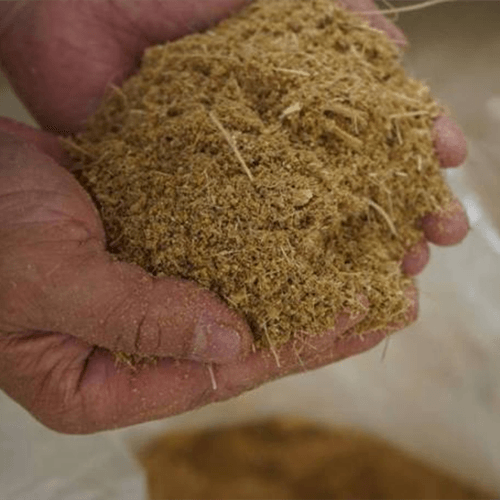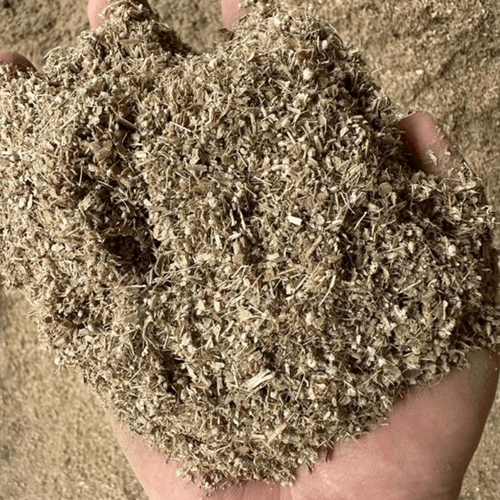Go Back

Plant-based Organic Fertilizer: Crop Straw Fertilizer
Composition Characteristics
High content of organic matter: Crop straws are rich in organic substances such as cellulose, hemicellulose, and lignin, and the content of organic matter is usually above 70%. After these organic substances are decomposed in the soil, they can increase the soil fertility and the soil's ability to retain water and nutrients.
Abundant nutrient elements: In addition to a large amount of organic substances, straws also contain major nutrient elements such as nitrogen, phosphorus, and potassium, as well as various medium and trace elements such as calcium, magnesium, sulfur, iron, and zinc. The nutrient content varies among different types of straws. For example, the straws of leguminous crops have a relatively high nitrogen content, while the straws of gramineous crops are rich in potassium.
High content of organic matter: Crop straws are rich in organic substances such as cellulose, hemicellulose, and lignin, and the content of organic matter is usually above 70%. After these organic substances are decomposed in the soil, they can increase the soil fertility and the soil's ability to retain water and nutrients.
Abundant nutrient elements: In addition to a large amount of organic substances, straws also contain major nutrient elements such as nitrogen, phosphorus, and potassium, as well as various medium and trace elements such as calcium, magnesium, sulfur, iron, and zinc. The nutrient content varies among different types of straws. For example, the straws of leguminous crops have a relatively high nitrogen content, while the straws of gramineous crops are rich in potassium.
More Details
Advantages
- Improve soil structure: After crop straws are returned to the field, they can be decomposed and transformed by microorganisms to form humus, which promotes the formation of soil aggregate structure. This makes the soil loose and breathable, increases the soil porosity and air permeability, and is beneficial to the growth and development of crop roots.
- Increase soil fertility: As the straws decompose, the nutrient elements in them are gradually released into the soil, providing a lasting supply of nutrients for crops. At the same time, straws can also promote the activities of soil microorganisms, enhance the biological activity of the soil, and further improve soil fertility.
- Retain water and nutrients: When straws are covered on the soil surface or turned into the soil, they can reduce the evaporation of soil moisture and improve the soil's water retention capacity. In addition, straws can adsorb and fix the nutrients in the soil, reduce the loss of nutrients, and improve the utilization rate of fertilizers.
- Reduce environmental pollution: Making crop straws into fertilizers and returning them to the field is an effective way to deal with straws. It avoids the problems of air pollution and resource waste caused by straw burning, realizes the resource utilization of agricultural waste, and protects the ecological environment.
- Reduce production costs: Using crop straws to make fertilizers reduces the amount of chemical fertilizers used and lowers the production costs of agriculture. At the same time, returning straws to the field can reduce the number of tillage operations, saving labor and machinery operation costs.
Disadvantages
- Slow decomposition rate: Organic substances such as cellulose and lignin in crop straws are relatively difficult to decompose. Especially under conditions of low temperature, drought, or low activity of soil microorganisms, the decomposition rate of straws will be even slower, affecting the timely release of nutrients.
- Risk of spreading diseases, pests and weeds: If the straws contain pathogenic bacteria, insect eggs or weed seeds, and are directly returned to the field without treatment, it may lead to the spread of diseases and pests and the growth of weeds, increasing the difficulty of preventing and controlling diseases and pests of agricultural crops.
- Competition for nitrogen with crops: In the initial stage of straw decomposition, microorganisms will consume a large amount of nitrogen in the soil, competing with crops for the nitrogen source. This may cause a short-term nitrogen deficiency in crops, affecting the growth and development of crops.
Production Methods
- Direct Return to Field: After harvesting, use straw returning machinery to crush the straws and evenly spread them in the field. Then, turn the straws into the soil through plowing, rotary tillage and other methods. In order to accelerate the decomposition of the straws, nitrogen fertilizers (such as urea) and microbial agents can be appropriately added to adjust the carbon-nitrogen ratio of the soil and promote the activities of microorganisms.
- Composting Fermentation: Cut the crop straws into pieces, mix them with organic materials such as livestock and poultry manure, human feces and urine, and biogas residues. Add an appropriate amount of water and a microbial fermentation agent, and stack them into a pile with a height of 1-1.5 meters, a width of 2-3 meters, and an unlimited length. During the composting process, turn the pile regularly to ensure the supply of oxygen and promote fermentation. Generally, after 1-2 months, the straws can be decomposed into fertilizer.
- Waterlogging Composting: In paddy fields or ponds, cut the straws into small sections and put them into the water. Add appropriate amounts of substances such as lime and superphosphate, stir evenly and then seal for waterlogging composting. The time for waterlogging composting depends on the temperature and the type of straws, generally taking 1-3 months. The well-composted straw fertilizer can be used as a base fertilizer or a top dressing.
Scope of application
Crop straw fertilizer is suitable for various soil types and agricultural crops, such as grain crops (rice, wheat, corn, etc.), cash crops (cotton, rapeseed, soybean, etc.), vegetables, and fruit trees. In the cultivation of different crops, straw fertilizer can be applied rationally according to the characteristics of the crops' nutrient requirements and growth stages.



